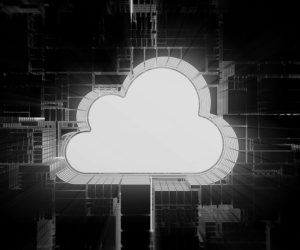DRaaS: VMware VCDR vs Azure Site Recovery

While cyberattacks are a common culprit, data loss can stem from an unavoidable natural disaster, a technical failure, or even human error. As data is the root of all business decision-making and operational workflows, your organization needs to be prepared for an unforeseen outage.
Disaster recovery as a service (DRaaS) is a critical component of your business continuity plan. This service allows businesses to back up their data centers and infrastructure within a third-party, secondary environment that will be available should their primary environment become corrupt or inaccessible.
For those looking for a reliable and cost-effective solution for disaster recovery of your on-premises VMware virtual machines or physical servers, you’re likely comparing VMware’s Cloud Disaster Recovery (VCDR) solution and Azure Site Recovery. Both solutions offer a way to replicate your workloads to the cloud for failover in case of a disaster.
VMware Cloud Disaster Recovery
This solution is a service that leverages VMware Cloud on AWS as the designated recovery site. It allows you to use familiar VMware tools and processes to manage your disaster recovery. This option supports various recovery scenarios, such as on-premises to cloud, cloud to cloud, and hybrid cloud. VCDR also provides features such as continuous data protection, near-zero RPOs, orchestrated recovery plans, and non-disruptive testing.
Azure Site Recovery
This service replicates your on-premises VMware VMs or physical servers to Azure as the recovery site. It provides a simple and integrated experience in the Azure portal or PowerShell, and it supports various recovery scenarios, such as on-premises to Azure, Azure to Azure, and Azure to on-premises. Azure Site Recovery also provides features such as application-consistent replication, flexible RPOs, customizable recovery plans, and test failover.
VMware VCDR v. Azure Site Recovery: Key Differences
To help you compare the two, we’ve highlighted some of the main differences between VMware’s VCDR solution and Azure Site Recovery so you can select the right solution for your business’s unique needs:
Pricing:
Depending on your workload size and frequency of replication, one solution might be more cost-effective than the other.
- VMware’s VCDR solution charges based on the number of protected VMs and the amount of storage used in VMware Cloud on AWS. For customers with lower Recovery Time Objectives (RTO), optional pilot light hosts can be provisioned and already available for recovery.
- Azure Site Recovery charges based on the number of protected instances and the amount of storage used in Azure.
Compatibility:
- VMware’s VCDR solution requires VMware Cloud on AWS as the recovery site, which means you need to have an AWS account and a VMware Cloud SDDC. (Note: Both can easily be created as part of the on-boarding process.)
- Azure Site Recovery does not require any additional accounts or services, and it can replicate any workload running on a supported hypervisor such as Hyper-V, ESXi, or physical servers.
Flexibility:
- VMware’s VCDR solution offers more flexibility in terms of replication frequency and granularity as it can replicate data continuously or at intervals as low as 5 minutes. This can protect individual disks or entire VMs.
- Azure Site Recovery offers more flexibility in terms of recovery options, as it can fail over to Azure VMs with different sizes and configurations than the original ones.
Next Steps: Ensure Your Data Is Always Available
To summarize, both VMware’s VCDR solution and Azure Site Recovery are viable options for disaster recovery of your on-premises VMware VMs or physical servers.
They each have different strengths and weaknesses that you should consider before choosing one. Your business should evaluate both solutions based on your specific requirements, such as RPOs, RTOs, budget, compatibility, and flexibility.
Arraya Solutions has certified staff ready to assist in your business’ Continuity and Disaster Recovery strategy. We can offer initial assessments and implementation from pilot to production! Contact one of our experts today to learn more.
Visit https://www.arrayasolutions.com//contact-us/ to connect with our team now.
Comment on this and all of our posts on: LinkedIn, Twitter and Facebook.
Follow us to stay up to date on our industry insights and unique IT learning opportunities.
